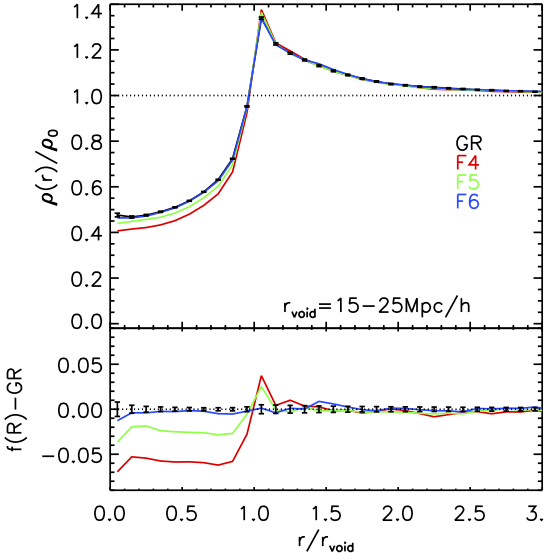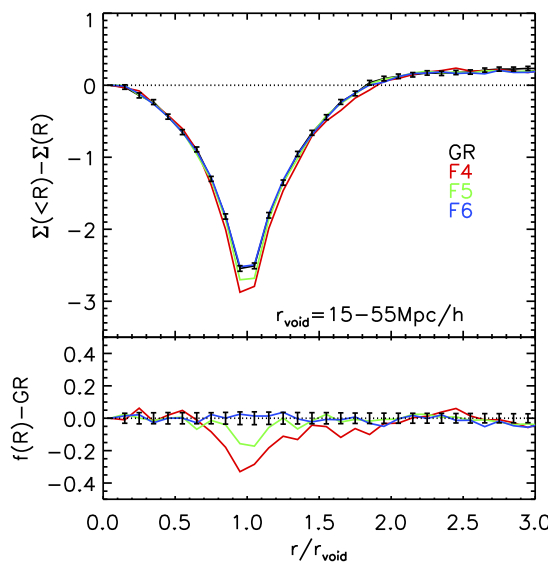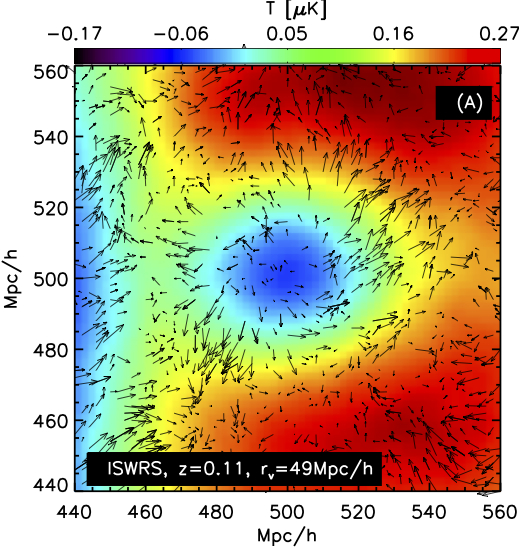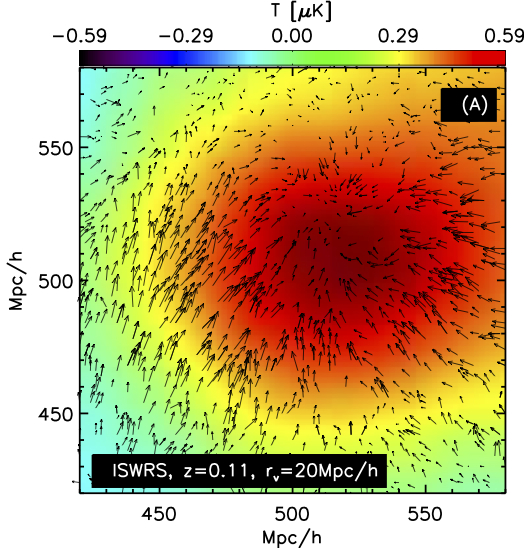Cosmic Voids
Gravitational lensing of voids
Cosmic voids are large underdense regions which account for most volume of the Universe. How much void dark matter exists and how it is distributed remain open questions that are deeply related to the nature of dark energy and gravity. For example, in the f(R) modified gravity model, voids are emptier than in general relativity (Fig. 1, left). Weak gravitational lensing provides a unique handle to address these questions. The coherent distortions of background galaxy images by cosmic voids can be used to infer the matter distribution of voids. The tangential shear profiles of lensing (Fig. 2, right) measures the shape of voids. This is a powerful way to test gravity (Clampitt et al. 2013; Cai et al. 2015).


Figure 1: Left) The dark matter density profiles of voids from N-body simulations of general relativity (GR) and f(R) modified gravity models. Voids in f(R) models are emptier than in GR. Right) The lensing tangential shear profiles of voids from N-body simulations of GR and f(R) modified gravity models. The steeper density profiles of voids in f(R) models make the lensing shear signal to be larger than that in GR(Cai et al. 2015).
Stacking voids for the Integrated Sachs-Wolfe effect
In the LCDM universe, due to the stretching of dark energy, the underlying potentials of cosmic voids are decaying. CMB photons will lose energy when traversing through them, inducing a CMB cold spot (Fig. 2, left). However, the evolution of voids depends on their environments. Some of them may be expanding with their environment (left). Others may live in overdense regions. Their expansions are restricted by their contracting environments. The amplitudes of the potentials at large scales are increasing, inducing a CMB hot spot (Fig. 2, right) (Cai et al. 2014a; Cai et al. 2014b).


Figure 2: The ISW effect for voids in underdense environment (voids-in-voids, left) and in overdense environment (voids-in-clouds, right). An ISW cold spot is associated with voids-in-voids. An ISW hot spot is found instead for voids-in-cloud. Arrows indicates the momentum of dark matter, which is expanding for voids-in-voids and infalling for voids-in-clouds (Cai et al. 2014a; Cai et al. 2014b).